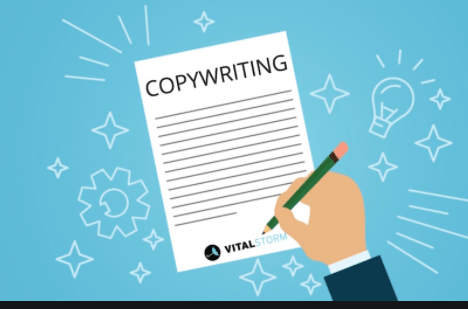Copywriting or the art of writing to sell: whether by e-mail, on your website or on social networks, Copywriting is essential to generate leads and win customers. How to properly exploit it? Here are the steps to follow. Do you remember that advertisement before the start of the 8 p.m. news? What about the flyers collected at the hairdressing salon? The content of that website you just visited? Yes ? If this content has marked you, it is because their writers have a perfect command of the art of copywriting. A delicate art to grasp, but which can do wonders in your marketing strategy!
Focus on this essential technique to make writing your best salesperson:
What is copywriting?
Copywriting involves writing highly persuasive texts to captivate the reader and inspire them to take action. Using cognitive levers, this technique should guide prospects through your conversion funnel to motivate them to fulfill a goal such as making a purchase, downloading content, requesting a quote, making a donation, making an appointment, subscribing to a demo, etc.
Copywriting techniques can be found in all promotional content, whether published in print or online. Hence the “copy” in the name “copywriting”. As soon as there is a “copy” to write, this method can be used. However, do not confuse copywriting and web writing!
A copywriter does more than write a copy, he creates a persuasive user experience by enhancing the brand’s value proposition. So, you need to become professional copywriter by attending online copywriting course. To do this, it uses techniques that we will see later in this article. Moreover, copywriting goes far beyond text. This method also applies to the structure of a page, the editing of a video or the creation of an advertisement.
What are the differences between copywriting and web writing?
Copywriting and web writing are terms used interchangeably. However, it is not the same discipline! A very good web copywriter is not necessarily a great copywriter. And vice versa ! Web writing consists of creating educational, useful content to meet medium and long-term objectives.
The best content writers are so low-key in storytelling that they can write dozens of posts for your blog, without even mentioning your brand. Yet, they can still be successful in attracting and converting leads. The strength of this technique is to be able to transform – in the long term – leads into prospects, prospects into customers and customers into regular buyers.
Copywriting aims to create productive engagement with your audience. The goal is, that over time, readers will trust your business and take a closer look at your product or service. Copywriting is primarily focused on one direct, short-term, high-yielding goal: driving sales. It is at the center of advertisements, product pages, promotional emails, landing pages, etc. The copywriter can create compelling headlines and Call-to-Action (CTAs) to entice consumers to buy a product, or submit vital tracking information like an email address. Some of the best-known marketing campaigns in the world are the brainchild of creative copywriters.
Copywriting is more than just writing content. It uses persuasive and emotional language to prompt the consumer to act immediately.
8 elements for success in copywriting
On average, visitors to your page read only 20% of its content. This leaves you little time to convince the visitor. This is where copywriting techniques come in!
1. Utility, above all!
Copywriting gets straight to the point. It excludes all unnecessary or empty sentences. How do you know your copy contains unnecessary sentences? For each sentence, ask yourself: am I providing concrete information? If the answer is no, delete the sentence or rephrase it with useful material.
2. Precise figures
Words like “hundreds” or “millions” can sound overwhelming. Suddenly, you say to yourself: it will necessarily capture my audience! Mistake ! These terms are imprecise, and your prospects may feel that you are exaggerating the truth. So prefer a real number to attract attention and increase your credibility.
3. Actionable calls to action immediately
A call to action that is too low-key makes readers believe that they have time to convert. However, copywriting consists precisely in increasing the direct conversion rate! The best way to miss your CTA is to start with an “if”. For example: “if you want to know more, you can…”.
Be direct and tell consumers exactly what you want from them. On Ubersuggest, the call to action is clear and direct: “type in a domain name or a keyword”. The Internet user knows what to do and he has no reason to hesitate.
4. An essential reason to click
Want visitors to listen to you and follow your suggestions? Give them a reason to do it. Do not talk about the characteristics of your offer, but what it will do for them: make them happier, increase their productivity, develop their sales, etc.
5. A value proposition
In addition to a reason to click, highlight your value proposition. What do your products / services have more than those of the competition? What explains your rates? The goal is to remove potential objections from your prospects.







